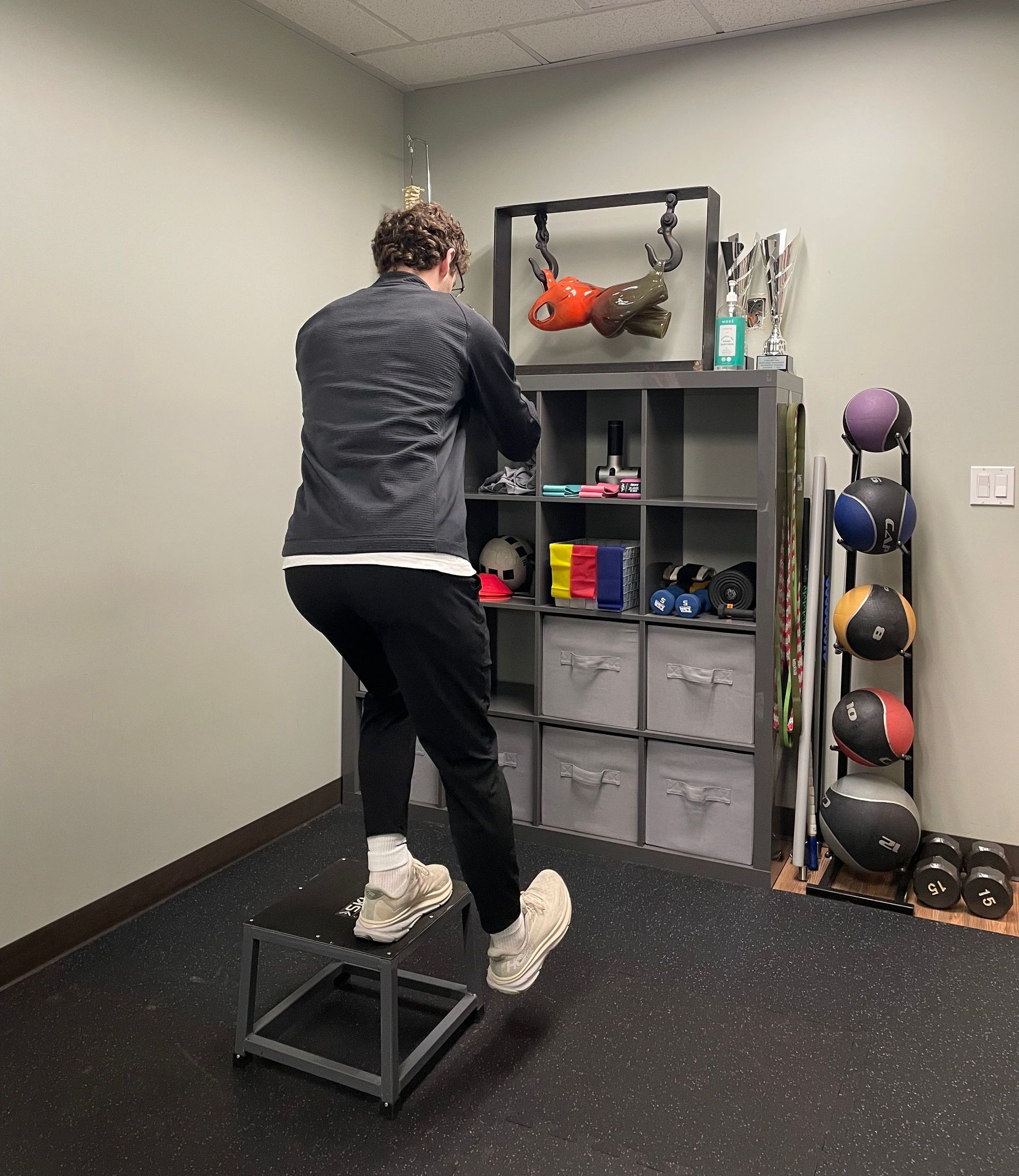Top 10 Things to do During Decompression
Top 10 Things to do During Decompression
This list is not ordered by importance. Each is pivotal to your health and recovery process.
1.Hydrate!
Drinking water does more than just quench your thirst. Among many other essential functions, it carries nutrients and oxygen to your cells and aids in lubricating and protecting joints and tissues. Proper hydration also helps stabilize your energy levels. Dehydration, no matter how mild, can have adverse affects on your health and reduce the efficiency of your body’s ability to carry out important tasks. To optimize hydration, avoid alcohol and tobacco as they can dehydrate the body and interfere with healthy circulation, ultimately having a negative effect on your spinal discs. Proper hydration has a direct impact on your disc health.
For adults, the Dietary Reference Intakes for Water from the Institute of Medicine of the U.S. National Academies states that an adequate intake is 101 fluid ounces of water for men and 74 fluid ounces of water for women per day. This is specific to all fluid intake and does not account for water consumed through food.
It is important to note that this number will vary depending on a number of factors including your exercise level, environment, and overall health. Making water your primary beverage and drinking it when thirsty are good habits to begin with. Benchmarks used to track your hydration are rarely feeling thirsty and colorless or light yellow urine. Overall, many things can affect what your personal adequate water intake should be and your dietitian or doctor can help determine what is right for you.
https://nap.nationalacademies.org/read/10925/chapter/6
https://www.mayoclinic.org/healthy-lifestyle/nutrition-and-healthy-eating/in-depth/water/art-200
2. Activity Modification
Upon sustaining an injury, a change in activity level may be advised to avoid worsening the pain or symptoms. No one likes to be sidelined from their hobbies or duties, however making an adjustment to particular activities may be essential to allow the body to recover. During your decompression treatment, it is important to prioritize healing which means avoiding highly strenuous activities as well as you can. This helps minimize setbacks during the treatment.
Activity modification can mean reducing physical activity intensity or strain. Really, we want to enhance the effectiveness of your treatment by minimizing other strenuous factors that may interrupt your progress. Our goal is to help return you to your normal and preferred activities and hobbies safely and promptly.
3. Avoid aggravating factors
This falls in a subcategory of activity modification. To allow your symptoms to get under control, it is key to avoid replicating your pain with certain activities, movements, or positions. These could include prolonged periods of sitting, standing, screen time, running, or jumping.
4. Avoid Inflammatory Foods
*See my previous blog post “A Fire Within” to read in depth about inflammation and nutrition*
Some inflammatory foods are processed meats, red meat, foods with added sugars, deep fried foods, and trans fat. These foods may promote and/or worsen any existing inflammation, ultimately slowing your recovery.
Some anti-inflammatory foods are; prebiotics (garlic, artichoke), antioxidants (blueberries), vitamin C (citrus fruits, bell peppers, vegetables), Omega-3 fatty acids (certain fish, nuts, or seeds), and probiotics/ gut-healthy foods (yogurt, sauerkraut, bananas, asparagus). Slowly making amendments to your diet is key to sustainability and developing healthy habits.
https://www.hopkinsmedicine.org/health/wellness-and-prevention/anti-inflammatory-diet
5. Seek Healthy Nutritional Alternatives
The purpose of this section is to encourage you to think about your current diet and look to make substitutions where you can. The key to nutrition is balance. Keep a variety of nutrient-rich foods in your diet to help sustain long term health. A well-balanced diet is important as cutting out entire food groups can deprive you of essential nutrients, therefore having a negative effect on your health.
I always recommend reading nutrition labels and opting for options with natural ingredients and less or no added sugars- if it looks more like a chemistry experiment than a cook book recipe, I won’t buy it. I also like to get my sugar from natural sources including organic fruits and juices, not from concentrate. Small changes like these make a big difference.
As always, these are simple recommendations and reminders. If you have specific nutritional needs or have been working on/ following a diet from a nutritionist or health care professional then continue with that.
*Bonus tip: To reduce harmful pesticide residue making its way into your diet, reference the “Clean Fifteen” and “Dirty Dozen” lists by the Environmental Working Group (EWG) when shopping for produce.
https://www.ewg.org/foodnews/clean-fifteen.php
6. Stay consistent with your treatment
Spinal decompression therapy is a process that requires consistency throughout the treatment. Think of it like lifting weights. If you lift once a week or with no routine, then you should not expect major strength gains. With spinal decompression, the same applies. Our treatment process follows a specific schedule intended to provide results. Consistency helps to provide relief, promotes further healing, and builds treatment tolerance. Hiccups throughout the process may lead to setbacks and slow the rate of recovery. Intention and consistency are the instruments of progression.
7. Stay consistent with your HEP
Your Home Exercise Plan is your best friend. It is something that you can keep up with long after your decompression treatment ends. Your HEP compliments the decompression treatment and is intended to help rehabilitate the affected tissues and joints with therapeutic exercises. Throughout your treatment we will build on your HEP and perform them in house so that you are confident and comfortable performing them on your own. Your HEP is specific to you.
Many people tend to stop their rehab exercises when they notice improvement, however it's important to maintain a variation of the exercises and level of exercise to minimize future complications and preserve the gains.
8. Regular self check-ins
In general, this is a great habit, and a big part of self-care and mental health. Regularly checking in on yourself and understanding how you are feeling is one of the most important things you can do whether you’re in pain or not. It's always a good practice to reflect, become familiar with your body, and ultimately be in tune with your own health. When recovering from an injury, it is helpful to be aware of multiple things: what aggravates your symptoms, what alleviates your pain, what progress or changes you’ve experienced, where the pain is, what the pain feels like, and more. This is a great way to keep yourself involved as the main character in your own recovery process. It also gives our doctor great insight into how you are feeling beyond objective assessments. This helps inform our treatment and keeps us on the same page throughout the process. Remember, no one truly knows how you feel except you!
9. Explore Ergonomics Modifications & Reduce Screen Time
As technology continues to burrow its way into our lives, our screen dependency goes up. Excessive phone use and modern day work lifestyles, both at home and in the office, place added stress on our spine and force us into suboptimal postures oftentimes leading to pain and complications. As we continue to spend multiple hours each day working on a computer or on our phones, it is important to ensure that the positions we find ourselves in throughout the day are supportive.
For people with desk based work lifestyles, we recommended that you seek to improve your ergonomics. This includes your chair, desk height, monitor/screen placement and more. Everyone will require a set up that fits their specific needs, but the following are things to consider as you plan to implement changes. In general, you want a chair that accounts for lumbar support, seat height and angle (your hips should be parallel with your knees and feet should not be hanging). You want to keep an upright and aligned posture throughout your spine. Try not to allow the head, upper back, or shoulders to peel forward. Desk height should be at a point where you can type or write without your shoulders shrugging up. In general you can think of a position where your elbows are bent 90 degrees and your shoulders are relaxed. Your monitor or screen should be positioned straight ahead of you at eye level so that you can avoid prolonged periods of cervical flexion, extension, or rotation. You also want it to be close enough so that you don't have to lean in or strain to see, but also not too close to where it is more harmful to your eyes.
Phones and other electronic devices pose a much more complex set of concerns because we are generally resting or in relaxed/lounging positions while using them. We all lay on the couch or chair on our phones, oftentimes slouched over or twisted like a churro. Many of us also sit in bed at night reading or lay down with our devices. While the consequences of these habits may not always appear immediately, there is a clear mechanism of injury and has been shown to cause long term postural changes and potential pain. While these positions may not be innately bad for your spine, chronic poor posture can lead to complications, especially if an injury is already present.
Poor ergonomics and posture throughout the day places excess strain on the spine, discs, joints, and muscles which may slow your recovery process if the symptoms are aggravated. At the end of the day, we’re all still going to do these things. No one has perfect posture all the time, and quite frankly that is an unrealistic goal to strive for. However, it's important to recognize when those deviations occur and try to limit the frequency and intensity of them.
10. Invest in Rest & Reduce Stress
Water, proper nutrition, exercise, and sleep are the most important aspects to overall health and wellness that you can control. Consistent, abundant, and quality sleep is an absolutely essential aspect to our wellbeing. Sleep is healing. It allows us to recover both physically and mentally and is critical to ensure the proper functioning of our physiological systems. However, sleep is overlooked and disregarded by most people.
Why sleep has been bogged down and placed lower on the list of health priorities for most people is a mystery to me, but for the longest time, I also did not take my sleep seriously. For years I went to bed at different times each night, used multiple alarm clocks, woke up tired, and felt my energy and mental clarity lacking throughout the day. When I was busy I always rationalized productivity over sleep and further perpetuated the cycle of poor sleep quality resulting in low energy and performance levels. This was damaging my health in a number of ways.
Whether you are recovering from an injury or not, each of the ten things listed above is critical to your overall health and wellness. However, I do think that sleep ranks among the top of the priority list, especially when healing. We need to allow our bodies to recover, and though there are a number of great recovery strategies ranging from ice or salt baths, heat, exercise, or conservative treatments, the one that we all depend on is sleep. We cannot function without it and that is because our body demands that we allow it to recover. With this being said, sleeping is not easy for everybody and oftentimes people cannot get comfortable in bed. It is also true that laying down in any position may not be an option for someone in pain.
There are tons of resources available to coach you on sleep and building better habits to improve the quality of it and I encourage you to look into them. I will make an in depth post down the road on sleep.
For now, aim for 7-9 hours of sleep per night, limit screen time, fluids, and food (especially sweets) before bed.
https://www.nhlbi.nih.gov/health/sleep/how-much-sleep








